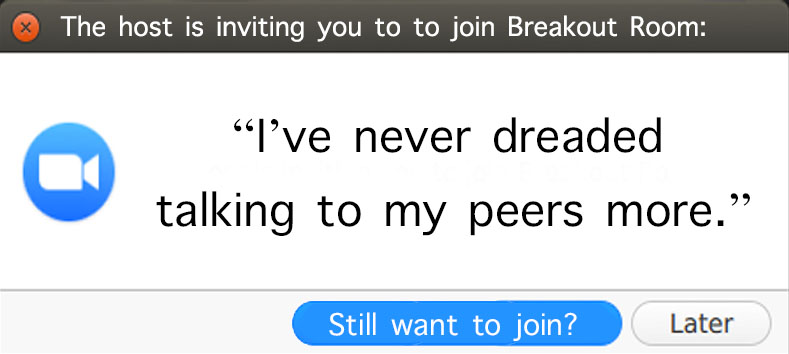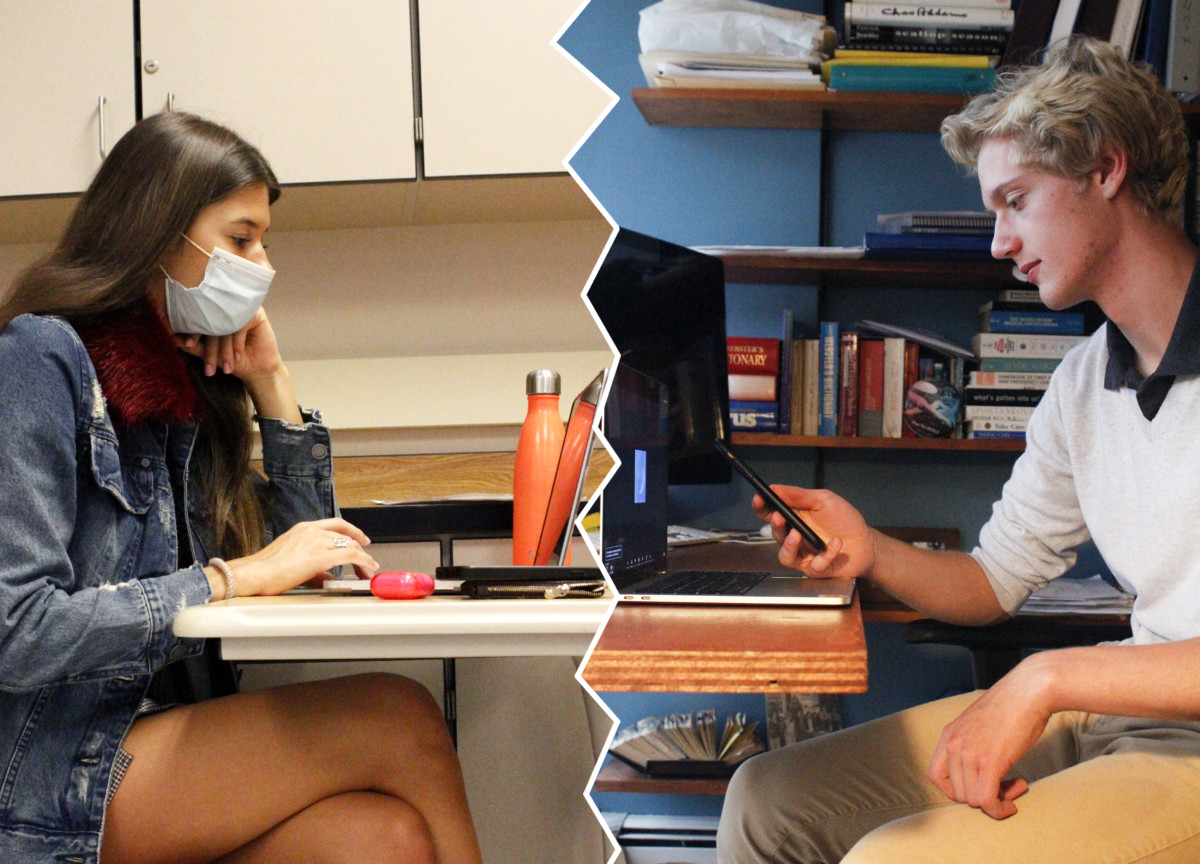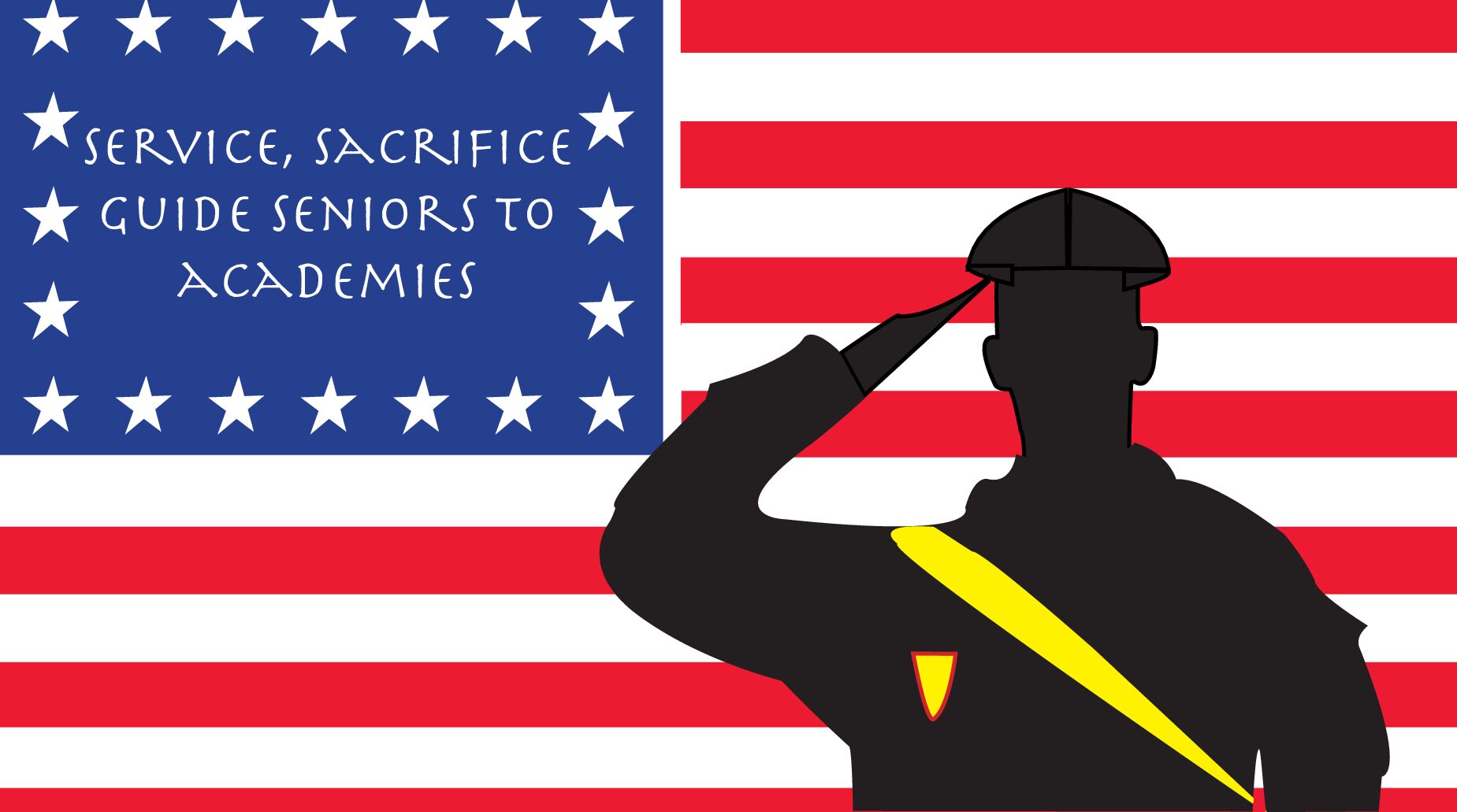Keira Cooney, Reporter
@keiraccourant
Seven months ago, students and teachers alike made the realization that online schooling via Zoom is inherently flawed. Teachers, who had perfected the way that they run their classes, had to start all over with a confusing online format. For students, staying focused and engaged has been more challenging than ever. Many say that the most significant piece missing from these online classes is human interaction — and that’s where breakout rooms come into play, much to the dismay of students.
In this new reality of online schooling, breakout rooms are the new equivalent of group discussions, and teachers are doing all they can to try and make the most out of this Zoom feature. English teacher, Robert Darken, is part of this club. “It’s so important for students to be able to talk to each other and share ideas. It helps teach students to help each other, while keeping them engaged” he said. Darken uses breakout rooms to emulate a typical class discussion environment, often splitting students up to talk about what they thought of a book, or even to peer edit with each other.
However, Darken does find it difficult as he’s unable to hover over these conversations, like he would in a regular classroom setting. “There is freedom awarded to students in the privacy of zoom breakout rooms, and that’s great considering that they may be more willing to share their opinions and thoughts,” he said. However, Darken also fears that too much of this freedom, and students will get off track, forgetting the purpose of the meeting is to further collaboration and use this opportunity to have meaningful conversations. “It’s hard to be unable to listen in on what students are thinking to make sure things make sense, and that they’re using their time productively” he said.
Students agree that, even with breakout rooms, peer communication and active learning continue to suffer. Awkward mike-muted silences and nervous utterings of “no, you go” are an unfortunate new staple in virtual peer discussion. “I honestly would just prefer to work alone rather than sit uncomfortably in silence” an anonymous student said. “I’ve never dreaded talking to my peers more.” This sophomore, who identifies as a naturally introverted person is a strong opposer to sitting in breakout rooms.
Many factors contribute to this loud silence, but all students agree that prompting conversation in breakout rooms is near-impossible. One student has labeled breakout rooms as a total and complete waste of time. “Nobody wants to be the person begging others to do work,” they said. “At least in class, kids are reminded that we actually have work to do, either by the teacher or the experience of sitting near other groups doing work.”

Calling them ‘genuinely anxiety-inducing’, this student also posits that the use of breakout rooms actually takes away from anything learned in class. “If you hate public speaking, it’s totally nerve-wracking and scary to put yourself out there with people you don’t know very well,” they said. “For a lot of students it can be difficult to function, and unfortunately a five-minute breakout room can cause them to lose focus for the rest of the class period.”
Teachers get it. Physics and Earth-Science teacher Micheal Miceli, on top of being new to NCHS, is learning along with students about the difficulties to breakout rooms. “I’m doing my best to try and keep everyone involved and talking, it’s so easy to get distracted, especially at home,” he said.
In his Physics classes in particular, Mr. Miceli has tried to connect both cohorts by assigning lab partners: one in school and one online. “A student in a cohort present in the classroom is teamed up with someone who is virtual and at home,” he said. “The student at home is then responsible for actually implementing and conducting the experiment with physical tangible items while their lab partner is required to collect the data, analyze it, and put it into a graph.”
Mr. Miceli does see the benefit of using breakout rooms in connecting his students, however, “Such a small group of students realize that they’re only talking to one individual in breakout rooms. One on one, they get more comfortable with being able to talk to their partners and ask for help,” he said.
Mr. Miceli is also quick to note the importance of learning how to overcome this problematic awkwardness. “It’s definitely a learning curve,” he said. You can’t beat in-person learning, but I think it’s going to better prepare students for what the world is going to be like, especially now with today’s society and technology components. This pandemic has changed everybody’s approach on how to approach these types of situations.”
Mr. Miceli explained that when he was in college, he often had to use Zoom calls with some of his classmates in a partner school in Chile. “Even though it’s a little bit more of the nitty-gritty right now, trying to muscle through it, I think in the long-term students will reflect back on it and take it that it was a good experience to have,” he said.
When the highschool was fully in-person, students who had opted into fully remote learning struggled with feeling completely uninvolved in class discussions. “I’ve had a couple of classes where the teacher just completely forgets about me, and then half of the class is dedicated to talking to others,” a remote learner said. “I usually just go on my phone and forget that I’m in a class. As much as I want to be involved and interested in class, I’m just listening to other people talk.”
As much as students wish to ‘break-up’ with the uncomfortable silence and cringe-inducing conversations that these virtual group discussions bring, they aren’t going anywhere soon. It seems we’re stuck in this toxic relationship for the foreseeable future. Teachers suggest that students should actively try to adapt and accept this process being uncomfortable. Darken said, “Students are in charge of their own education, and have the opportunity to decide how much they personally get out of school. It’s up to them to make the mature decision on what to do.”




